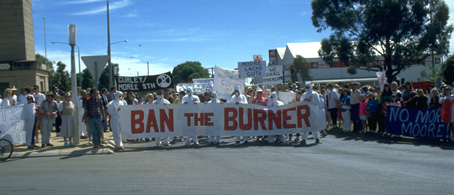Environmental problems are poorly reported in the media because of the need to provide entertainment, rather than political awareness, to attract audiences for advertisers, even in news and current affairs programmes.
Issues such as garbage and sewage sludge only get coverage, despite their importance, when there is a fight over the siting of a landfill or incinerator and then the coverage is on the “anger and anguish of affected citizens, or the conflicting claims of corporate spokesmen, government regulators and environmental activists” rather than the issues and technical background to them.

A survey commissioned by the American Society of Mechanical Engineers of media coverage in the US in 1991 found that independent experts were seldom used as sources: “The news was not oriented toward describing or explaining the problem, but rather toward disputes over what should be done about it.”
In one story by ABC’s Nightline, for example, Nebraskan residents opposing a ‘low-level’ radioactive waste dump in their neighbourhood, attempted to present, with the help of an EPA expert Hugh Kaufman, rational arguments involving discussion of various technical issues. However, according to Kaufman, the TV crew wanted emotional material and in the end used archive footage of heated meetings to get the emotional content they wanted:
They defined the issue this way: The public are a bunch of emotional misfits who think about Chernobyl and aren’t doing their homework, while proponents are these brilliant technical experts. In other words they walked in with a predetermined story when, in fact, what they had seen in Nebraska was just the opposite.
This is a feature of many news stories about local controversies. The intelligence and research of local residents is downplayed and they are presented as passionate, self-interested and inexpert. This tends to discourage wider support for their cause from the viewing public and to disempower other citizens by depriving them of attractive models of political activism.